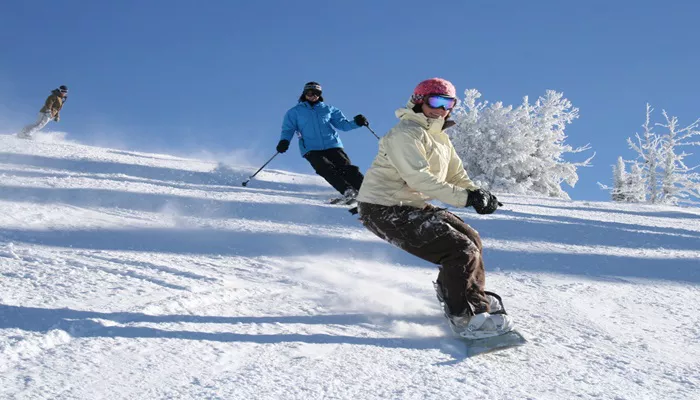Heli skiing is an exhilarating adventure that takes skiers and snowboarders to remote, untouched powder fields accessed by helicopter. Unlike resort skiing, heli skiing requires careful preparation and specialized gear to ensure safety, comfort, and an unforgettable experience. Packing the right equipment can make all the difference between a smooth ride and a challenging day in the backcountry.
This guide covers everything you need to bring for a successful heli skiing trip, including essential gear, clothing, safety equipment, and optional accessories that enhance your experience.
1. Understanding the Demands of Heli Skiing
Before packing, it’s essential to understand the unique conditions of heli skiing:
Remote locations: No access to ski lodges or rental shops, so you must bring everything you need.
Variable weather: Rapidly changing weather conditions demand adaptable clothing and gear.
Deep powder: Special equipment is required to handle deep, ungroomed snow.
Safety concerns: Avalanche risk requires carrying proper safety gear.
2. Essential Skiing and Snowboarding Gear
Your skiing or snowboarding setup must be optimized for deep powder and backcountry conditions.
Skis or Snowboard
Powder-specific skis: Wider skis (100mm+ underfoot) provide better floatation in deep snow.
Powder snowboards: A directional or swallowtail board improves maneuverability in soft snow.
Pre-mounted bindings: Ensure bindings are properly adjusted before your trip.
Boots
Ski boots: Comfortable, well-fitted boots designed for off-piste skiing.
Snowboard boots: Stiff and responsive boots for powder performance.
Gaiters: Prevent snow from entering your boots.
Poles
Adjustable ski poles: Helps with varying snow depths and terrain.
Powder baskets: Wider baskets prevent poles from sinking too deep into the snow.
3. Avalanche Safety Equipment
Since heli skiing takes place in uncontrolled terrain, avalanche preparedness is critical.
Avalanche Transceiver
A beacon helps locate you or others in case of an avalanche.
Make sure it is fully charged and turned on before skiing.
Avalanche Probe
A lightweight, collapsible probe is used to pinpoint buried skiers.
Shovel
A compact, durable shovel helps in digging out avalanche victims.
Avalanche Airbag Backpack
A backcountry-specific backpack with an airbag system can improve survival chances in an avalanche.
Look for one with storage space for safety gear and hydration compatibility.
4. Proper Clothing for Heli Skiing
Dressing appropriately for heli skiing involves layering to manage changing conditions.
Base Layer
Moisture-wicking thermal top and bottom (Merino wool or synthetic fabric).
Avoid cotton, as it absorbs moisture and dries slowly.
Mid-Layer
Fleece or synthetic insulated jacket for warmth.
Lightweight down or synthetic vest for extra insulation.
Outer Layer
Waterproof, breathable shell jacket (GORE-TEX or similar material).
Waterproof ski pants with ventilation zips.
Helmet-compatible hood for extra protection.
Gloves and Accessories
Waterproof gloves or mittens (consider carrying a backup pair).
Neck gaiter or balaclava for wind protection.
Lightweight beanie for warmth under your helmet.
Helmet with adjustable vents for temperature control.
Goggles with interchangeable lenses for varying light conditions.
5. Additional Essentials to Pack
A well-prepared heli skier carries a few extra items for comfort and emergency situations.
Hydration and Nutrition
Hydration system (hydration bladder or water bottle with insulated cover).
High-energy snacks (protein bars, trail mix, or energy gels).
Sun Protection
SPF 30+ sunscreen to prevent sunburn from high-altitude UV exposure.
Lip balm with SPF to protect against chapped lips.
Polarized sunglasses for times when goggles aren’t necessary.
Emergency and Repair Kit
Multi-tool for quick equipment fixes.
Duct tape for temporary repairs.
First aid kit with basic medical supplies.
Extra ski straps or binding repair tools.
6. Optional but Useful Extras
While not essential, these items can enhance your heli skiing experience:
Action camera (GoPro or similar) to capture the adventure.
Hand warmers for extra warmth during cold mornings.
Extra socks and gloves in case of wet conditions.
Backup goggles or lenses for changing light conditions.
Lightweight down jacket for extra warmth during helicopter rides or breaks.
7. Packing Tips and Final Preparations
Pack Light but Smart
Bring only what’s necessary to avoid excess weight.
Organize gear in a way that allows quick access to safety equipment.
Check with Your Guide or Operator
Some heli skiing operations provide avalanche safety gear, while others require you to bring your own.
Verify weight restrictions for personal items on the helicopter.
Test Your Gear Beforehand
Break in new boots and ensure skis or snowboards are in top condition.
Test and familiarize yourself with safety equipment like transceivers and airbags.
Conclusion
Packing the right gear for heli skiing ensures both safety and an enjoyable experience. The key takeaways include:
Bringing the right skis, snowboard, and boots optimized for deep powder.
Carrying avalanche safety gear, including a beacon, probe, shovel, and airbag backpack.
Dressing in moisture-wicking layers and waterproof outerwear to stay warm and dry.
Packing hydration, sun protection, and emergency items to stay comfortable throughout the day.
By following this guide, you’ll be well-prepared to take full advantage of your heli skiing adventure and enjoy pristine powder runs in some of the world’s most breathtaking backcountry locations. Safe skiing!

